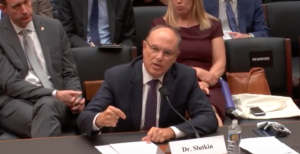I treat epidemics, including community violence. Here’s my advice for containing the spread of anti-Semitism.
 Cure Violence is known as an approach to rapidly reduce violence in a community using a health-approach. It is less well known that Cure Violence is also adapting its methods to many other types of violence. For example, Cure Violence has been adapted to address sectarian violence in Iraq and Syria, election violence in Kenya, and prison violence in the UK. Recently, the Juarez, Mexico sites received training in addressing gender-based violence.
Cure Violence is known as an approach to rapidly reduce violence in a community using a health-approach. It is less well known that Cure Violence is also adapting its methods to many other types of violence. For example, Cure Violence has been adapted to address sectarian violence in Iraq and Syria, election violence in Kenya, and prison violence in the UK. Recently, the Juarez, Mexico sites received training in addressing gender-based violence.
In a recent article for JTA, Dr. Gary Slutkin talked about adapting the Cure Violence model to address group-on-group violence, such as anti-Semitism. Slutkin writes, “Solving for violent anti-Semitism will require the same shift in paradigm and approach” as solving for community violence.
The reasons for this is , as Slutkin explains, “In its transmissibility, anti-Semitic violence is no different than election violence, tribal violence, neighborhood violence or cartel violence. Anti-Semitism and violent attacks, including mass and rage shootings, arise like any contagious process. Group norms influence susceptible individuals to action. Their actions in turn influence others. In each event, there are almost always other individuals who were aware in advance of the attacker’s intentions. A truly lone wolf attack by someone unconnected to any kind of community will always be a challenge. But much of the violence we have seen in recent years came from people who were “infected” within a group or community.”
The approach would involve working the problem from the inside, with outreach workers and violence interrupters. Slutkin writes, “While those committing violent attacks in Brooklyn are unlikely to be reached or moved by outreach or positive messages from the Jewish community, results have shown that credible individuals from within groups can change the behavior of their peers, even with the most refractory or hardest to reach, if the appropriate epidemic control methods and training are applied.”
The intervention itself would operate much like the Cure Violence approach works in communities. “An intervention takes place when an interrupter becomes aware that one or more individuals are planning a violent act. The interrupter gets to the person and seeks to reorient their thinking away from violence, following up with them as often and as long as is required. When someone is particularly “hot” or still susceptible to acting, they are assigned a caseworker who stays in touch and continues to monitor them. That one interrupted act also may have prevented one or more retaliations and a chain reaction of many more.”
You can read the full article at the JTA website, where Dr. Slutkin goes into more detail on the approach and how to apply it to group-on-group violence. And you can also read more about how this is starting to come to life in New York City, where Mayor Bill de Blasio recently announced a new initiative that will apply the Cure Violence Global epidemic control method to address the problem in New York City.
Slutkin offers, “To effectively address the anti-Semitism epidemic, we must implement such efforts internationally.”


